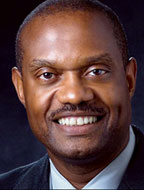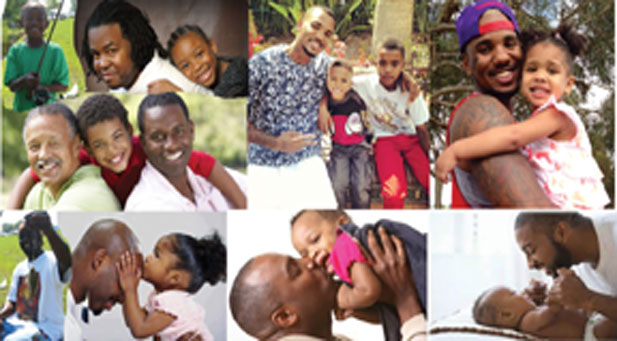
 The CDC Funds Black organizations
The CDC Funds Black organizations
Eugene McCray, M.D., Director of the Division of HIV/AIDS Prevention in CDC’s National Center for HIV/AIDS, Viral Hepatitis, STD, and TB Prevention
It’s no secret that Black people are more adversely affected by HIV/AIDS than any other racial or ethnic group in the United States. But new funding by the Centers for Disease Control and Prevention (CDC) is giving African American organizations an infusion of financial resources that activists hope will go a long way toward turning the tide.
In July, the CDC awarded $216 million over five years to 90 community-based organizations (CBOs), nearly a third of which are Black-led. With the funding, CBOs will be able to implement high-impact HIV prevention strategies such as HIV testing, connecting people to care, and providing access to biomedical tools such as pre-exposure prophylaxis and post exposure prophylaxis. The CDC hopes the funding will greatly impact communities deemed at highest risk for HIV, including the Black community, MSM and injection drug users.
“Community-based organizations have been vital to our nation’s HIV prevention efforts since the earliest days of the epidemic,” said Jonathan Mermin, M.D., MPH, director of the CDC’s National Center for HIV/AIDS, Viral Hepatitis, STD, and Tuberculosis Prevention, when announcing the funding. The organizations chosen to receive the financial award “have the credibility and experience needed to deliver the most effective HIV prevention strategies to those who need them most.”
Statistics Tell the Story
The 90 funded organizations are located in the 50 geographic regions that had the most HIV diagnoses in 2011. Of the 90 CBOs, 67—almost 75 percent—serve African Americans, says Nikki Mayes, a spokeswoman for the CDC. Twenty-five of the 90 organizations are led by African Americans. An additional 47 organizations will receive funding by serving as subcontractors to the main organizations. Thirteen of the subcontracting organizations are led by African Americans.
This means that organizations led by African Americans account for approximately 27 percent of the organizations that received funding. African Americans make up 13 percent of the U.S. population and accounted for 47 percent of HIV diagnoses between 2008 and 2011. The rate of new infections among Black Americans is eight times that of Whites, according to the CDC, and the rate of new infections among Black women is 20 times that of White women and nearly five times that of Latinas. Black MSM are particularly at risk, with young gay and bisexual men most affected.
Although the final budgets are still being negotiated, organizations that have subcontractors are expected to get approximately $735,000 per year to be divided among the partner CBOs, Mayes says. Organizations that are not working with subcontractors are expected to receive approximately $350,000 per year. The amounts should be finalized in early August, Mayes states.
With their ties to the community, the Black-led organizations are hoping to turn these statistics around. The 25 organizations directly funded are Abounding Prosperity Inc. in Dallas; Access Community Health Network in Chicago; BEAT AIDS Coalition Trust in San Antonio; the Black AIDS Institute in Los Angeles; Brotherhood Inc. in New Orleans; California Prostitutes Education Project in Oakland, Calif.; Change Happens in Houston; Community Health Awareness Group in Detroit; Community Wellness Project in St. Louis; Ebony House Inc. in Phoenix; Empower U Inc. in Miami; Empowerment Resource Center in Atlanta; Family and Medical and Counseling Service Inc. in Washington, D.C.; Guiding Right Inc. in Midwest City, Okla.; Harlem Hospital Center in New York City; Iris House in New York City; the Institute of Women and Ethnic Studies in New Orleans; My Brother’s Keeper Inc. in Jackson, Miss.; Quality Home Care Services in Charlotte, N.C.; Recovery Consultants of Atlanta Inc.; South Carolina HIV/AIDS Council in Columbia; South Side Help Center in Chicago; St. Hope Foundation in Houston; Us Helping Us, People Into Living in Washington, D.C.; and Whittier Street Health Center in Boston.
The 13 Black-led organizations serving as subcontractors are SisterLove Inc. in Atlanta; Fighting Back Inc. in San Antonio; NAESM in Atlanta; T.H.E. Clinic; Teen HYPE in Detroit; KICK; It Takes a Village in Aurora, Colo.; the Multicultural AIDS Coalition in Boston; National Black Leadership Commission on AIDS Inc. in New York City; Project Vida in Chicago; Street Works in Nashville, Tenn.; Care Alliance Health Center in Cleveland; and Glide in San Francisco.
Rebounding From a Shutout
The funding is particularly gratifying after Black organizations were shut out of a major CDC funding opportunity last year. In March 2014, the CDC awarded $115 million over five years to 21 organizations to provide technical assistance and capacity building in order to facilitate high-impact HIV interventions in health departments, CBOs and health-care organizations.
When it was determined that none of the award recipients were Black organizations, many cried foul. Phill Wilson, president and CEO of the Black AIDS Institute, wrote, “The effect of this decision is that Black organizations have been locked out of leading technical assistance and capacity building in this country for the next five years.”
This year’s funding opportunity gives Black-led organizations the opportunity to transform their communities. “For once, it is understood that so many organizations of color are the faces of HIV prevention when it comes to the communities we serve,” says Darwin Thompson, associate executive director of NAESM. “Fostering and nurturing relationships not only with populations we serve but with local organizations as well can produce an overflow of success over the next five years.” NAESM will be collaborating with AID Atlanta, an AIDS service organization, and SisterLove on Project Real, a prevention initiative in the metropolitan-Atlanta area.
“This funding targets local communities to help maximize the impact of every federal prevention dollar,” says Eugene McCray, M.D., director of the CDC’s Division of HIV/AIDS Prevention. “By delivering powerful prevention tools where they’re needed most, we can have a transformative impact on the epidemic.”
Tamara E. Holmes is a Washington, D.C.-based journalist who writes about health, wealth and personal growth.




Be the first to comment